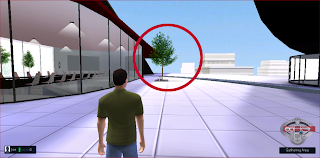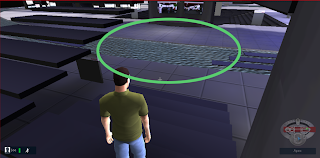 |
 |
 | |||||
| The floor in avaya is an good example of a monocular depth cue involving lighting and shading. The light entering the windows above shines down and and creates lighter spots on the ground where the light directly hits. The darker shaded spots are the areas of the ceiling that do not have windows and the light is not shinning through. These screenshots are several examples of the many times of monocular cues that can be found in virtual worlds. Monocular cues are effects used by designers to confuse the human brain into thinking what they're seeing is a three dimension space when what they are actually seeing is colors and angles cleverly placed on a two dimensional canvas. This is a final exercise from the Immersive Education course that I am taking at Boston College. The course is called Discovering Computer Graphics. For details, visit the immersive BC portal at http://ImmersiveEducation.org/ |





No comments:
Post a Comment